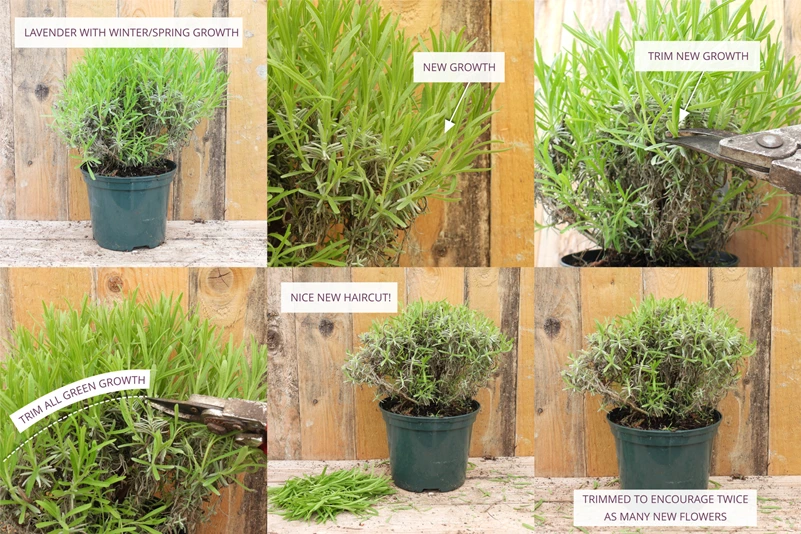Trimming Lavender is a lovely chore: the soft foliage clips effortlessly, the finished bush looks so neat and primed for summer, and you end up smelling even better than you did before.
When to Trim English Lavender
By the end of March or very start of April, Lavender across the UK should be covered in a coat of green new stems that grew during late Winter / early Spring.
By trimming off this first flush of early Spring growth, the older wood behind it will produce even more shoots, and so more flowers in Summer.
Note: the light trimming advice given below is for people following the standard late Summer cut method.
This means you would already have hard pruned your plants last year in late Summer – early Autumn after flowering, so this is their Spring tidy.
If you were following the Spring cut method (which is less common in the UK), you would hard prune, not trim your plants at this time.
How to Trim English Lavender
This new growth, meaning anything that grew during or after the winter just passed, is literally colour coded for your trimming convenience: every part of the new growth is green (maybe with hints of grey), from the soft green stems to the lush green leaves.
The previous year’s growth has woody stems that are turning brown, and the leaves have matured to their iconic frosty silver-grey: don’t trim this part at all in Spring, it’s where all the flower stalks will sprout from.
The primary purposes of this Spring trim are
- Long term: To prevent leggy, spreading growth; we want dense, bushy plants without lots of gaps
- Short term: To get twice as many flowers this summer (bonus: the flower stems will be sturdier too)

Is This Method the Only Way to Prune Lavender?
No, there is almost never one way in gardening!
The most important thing is that you prune Lavender: it must be pruned yearly to stay bushy and floriferous! Without pruning, Lavender becomes woody and flowering declines much faster.
When you prune and even how you prune are secondary; they can be adjusted to fit your schedule and garden design.
In the UK, with English Lavender, there are two basic pruning regimes – both regimes include a deadheading trim after the first flush of flowers:
- the Spring cut with an optional second deadheading & trim before Winter (which seems to be more popular in Spain, South of France)
- the late Summer cut with an optional early Spring trim as described above (which seems to be the more traditional British way)
At Ashridge, we were born’n’raised on the late Summer cut, which gives the buds that will flower the following year as much time as possible to develop.
We knew of the Spring cut, which leaves the dry flower stalks on the plant over Winter, but no one we knew did it and so it seemed like an exotic practice!
The argument goes that in warmer, drier countries, leaving the dry flower stalks in place over Winter would increase the aroma and add some interest. But in a cosy, humid Somerset garden, those stalks tend to turn black (so no aroma anyway) and decrease the all important air flow around the plants during the dampest months – if your plants are in a nice windy location, that won’t be an issue.
